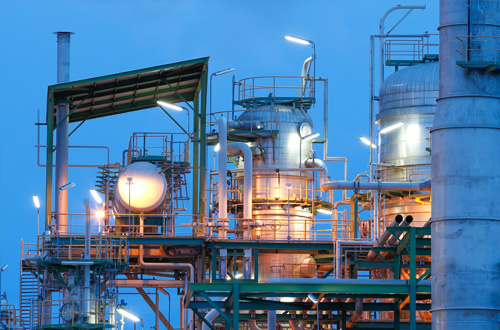
BLOG
28
2023-06
Precautions for the use of hydrochloric acid
Overview of Hazards Health Hazards: Exposure to its vapors or fumes can cause acute poisoning, leading to conjunctivitis, burning sensations in the nasal and oral mucosa, nosebleeds, gum bleeding, and tracheitis. Ingestion can cause burns and ulceration of the digestive tract, potentially leading to gastric perforation and peritonitis. Contact with eyes and skin can cause burns. Chronic Effects: Long-term exposure can lead to chronic rhinitis, dental erosion, and skin damage. Environmental Hazards: It poses a threat to the environment and can cause pollution to water bodies and soil. Fire and Explosion Hazards: This product is non-flammable, highly corrosive, and strongly irritating, which can cause burns to the human body. Toxicological Data and Environmental Behavior Acute Toxicity: LD50 900 mg/kg (oral in rabbits); LC50 3124 ppm, 1 hour (inhalation in rats) Hazardous Characteristics: It can react with some active metal powders, releasing hydrogen gas. It can produce highly toxic hydrogen cyanide gas when in contact with cyanides. It reacts with bases, resulting in a neutralization reaction that releases a large amount of heat. It is highly corrosive. Combustion (Decomposition) Products: Hydrogen chloride.
View more28
2023-06
Limestone in calcium oxide is heated above 900℃ in a lime kiln.
We basically know that calcium oxide is a white powder, containing other substances that are light yellow or gray powders, but it also has hygroscopic properties. The limestone in calcium oxide is heated in a lime kiln to above 900°C. It can be used as a drying agent, commonly used to prevent moisture from returning to debris. It releases a large amount of heat when combined with water or absorbs moisture from humid air, which is mature lime [calcium hydroxide Ca(OH)2, a white powdery solid. Chemical Caa(OH)2, also known as slaked lime. After adding water, there are two layers: the upper layer solution is called slaked lime water, and the lower layer suspension is called lime milk or lime paste. For general calcium hydroxide manufacturers, the calcium oxide in lime refers to some active calcium oxide that is easily hydrolyzed to produce calcium hydroxide. Due to the heating temperature, some calcium oxide does not immediately undergo hydrolysis in water and still exists in the form of free calcium oxide. Free calcium oxide in water is also known as calcium peroxide. Lime generally contains a small amount of calcium silicate, calcium aluminate, calcium ferrite, and other calcium chemical substances, which are inactive calcium salts. Below is a brief introduction to the differences between the two from professional calcium hydroxide manufacturers. 1. The whiteness of calcium oxide must reach above 90, and it must pass strength tests to ensure the whiteness of putty powder, improving the coating, hardness, and waterproof ability. 2. The production of gray calcium requires high-speed damage and waste removal through a gray calcium machine to achieve uniform fineness, increase looseness, have good gloss, and be easy to scrape during construction. 3. During the decomposition process of calcium oxide, it should undergo incomplete thermal decomposition and cannot decompose like calcium hydroxide. Otherwise, due to the short decomposition time, it has poor water retention during use, which can easily lead to drying and other issues, resulting in poor stability of the coating, which is not conducive to construction. Due to the non-toxic, odorless, and pollution-free nature of inorganic immersion waterproof agents, they can be directly used in drinking water facilities. Inorganic immersion waterproof agents can be directly applied to the surface of wet concrete, hardening quickly, with a short construction period and safe construction. Inorganic immersion waterproof agents also have advantages such as good waterproof effect, aging resistance, long service life, and low cost. In addition, the use of waste fly ash from power plants is beneficial for comprehensive environmental management. By incorporating calcium hydroxide and low-alkali expansion agents into concrete, fibers can suppress early shrinkage cracks in concrete; through wet curing, continuously generating hydration products of expansion agents such as ettringite, self-stress is produced in concrete during the cement hardening process, compensating for shrinkage in concrete and playing a role in preventing seepage and cracking.
View more28
2023-06
The current status and trends of metal cleaning agents
With the rapid development of China's equipment manufacturing industry, the requirements for the performance and cleaning effect of cleaning technology and detergents are becoming increasingly high due to new materials, new processes, and new equipment. Especially with the implementation of energy-saving and emission-reduction policies, cleaning technology is developing towards high efficiency, energy saving, and environmental protection. The detergents used are also undergoing continuous improvements, and new discoveries in cleaning mechanisms are being applied. The amount of information about detergents is also increasing.
View more28
2023-06
Selection and Mechanism of Action of Paint Flocculant AB Agent
In the spray paint wastewater treatment process, the characteristics of oily paint wastewater can be simply described as high viscosity, high COD, and containing chemical elements such as toluene and xylene. For this type of paint wastewater, it is recommended to use paint flocculant products with good de-viscosity and coagulation.
View more28
2023-06
What are the technical requirements for metal cleaning agents?
Metal cleaning agents generally used for industrial dirt cleaning are now widely applied in various industries, and their effectiveness is significant. Among them, the application requirements for industrial cleaning agents are quite strict. Cleaning agents used for different cleaning purposes and objects must meet the following technical requirements to ensure their sufficient functional value:
View more28
2023-06
The main function of a water curtain spray booth is to absorb the paint residue that is sprayed out, preventing the residue from adhering to the spray booth. However, as the workload of painting increases, the paint residue and organic substances in the water can release pollutants, so the spray booth needs to regularly discharge a large amount of circulating water and replenish fresh water.
View moreFEEDBACK
Contact Us
E-mail:Danielgao@chemical86.com
Website:www.chemical86.com
WhatsApp:+(86)-15218896683
Address: Huangpu District, Guangzhou City, Guangdong Province, China
C2 2223, 85 Kefeng Road









